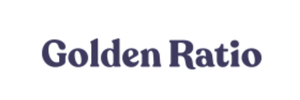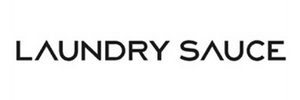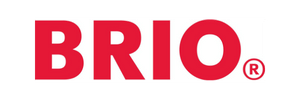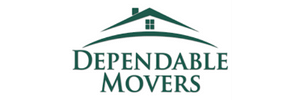Complete Guide to using Direct Mail Marketing forInsurance Companies
IgnitePOST is a favorite solution for insurance companies to automatically send handwritten direct mail cards and delight customers.
Treat yourself to a free sample today.


IgnitePOST is a favorite solution for insurance companies to automatically send handwritten direct mail cards and delight customers.
Treat yourself to a free sample today.


Modern digital marketing is competitive, to say the least. And several reports suggest how the insurance sector is lagging behind other industries in reaching its target audience due to a paradigm shift in user expectations.
And to make matters worse, the average customer acquisition cost (CAC) across industries is at an all-time high. The insurance industry, especially, has one of the highest average CAC of about $900.
So while businesses fight to be seen, what can insurance companies do to stand out and draw in customers?
It’s time to go back to the one underrated marketing strategy - direct mail marketing.
In this guide, we’re going to tell you all about the status quo challenges insurance businesses face in marketing and why direct mail marketing is the next step for them.
What is direct mail marketing in insurance?
What are the benefits of direct mail marketing in insurance?
Direct mail marketing tips and best practices for insurance.
How to get started with direct mail marketing for insurance businesses.
Direct mail marketing is a direct response technique companies use to physically deliver direct mail communication to a consumer’s mailbox.
For insurance companies, direct mail marketing can include sending postcards, handwritten notes, brochures, coupons, etc., to their prospects and customers.
Before we dive into why you should consider direct mail marketing for insurance companies, let’s take a quick look over the status quo of marketing challenges:
1. High competition
The global insurance market is massive. Every country and state has many insurance companies sprouting up in every nook and corner. Add to that agents who liaison with these companies. So the competition to stay visible to your target audience and be chosen is obvious. It calls for a revamp of marketing methods to stay a step ahead of your competition, understand potential client needs clearly, and tailor your content to build trust.
2. Poor customer experience and loyalty
Customer experience can make or break loyalty. Insurance companies find it challenging to hook customers with interesting, engaging and human experiences. Since these purchases need to be more ‘informed’ instead of ‘impulsive’, it needs insurance companies to make prospects feel comfortable interacting with them and build stronger relationships with their existing customers.
3. Lack of proper communication
Most companies find attracting high-quality prospects while running their marketing strategies hard. Owing to the increase in the amount of content shared across digital platforms like social media, entertainment consumption has increased over time. But when it comes to insurance products, it’s important to get across the smallest of details that can help consumers make the right purchase decision - digital platforms no longer consider this information ‘entertaining’ enough.
4. Changing user demographics and behavior
Users’ preferred insurance policies can vary depending on their demographics, such as age, location, job, income, etc. Such constant changes lead to insurance companies failing to target the right audience precisely over digital platforms. This often results in mass marketing tactics like broadcast messages, emails or social media advertising - this is also one of the leading reasons behind the ever-increasing customer acquisition costs.
Potential insurance purchasers are constantly on the lookout for the best policies and compare providers before zeroing in on one.
While there’s tough competition to market your insurance policies online, direct mail marketing is a shortcut to directly reach your target audience and push them to book an appointment.
Insurance companies can use direct mail marketing from a promotional perspective as well as to communicate and stay in touch with their existing customers.
Let’s look at an example to explain how direct mail marketing works in insurance:
The short answer is yes.
Direct mail may come across as conventional and outdated in this digital day and age, but statistics prove otherwise.
A massive 73% of US insurance customers said they prefer receiving direct mail for all sorts of communications, as per a report. And this preference is not far behind with younger audiences. The same report suggests millennials, almost 57%, prefer direct mail, too.
These numbers reiterate the need for insurance companies to include direct mail marketing to attract new customers.
Let’s take a look at some of the benefits of direct mail marketing in insurance to make it one of the most effective strategies for company growth:
1. More personalization
Unlike paid marketing, such as ads or push notifications, direct mail is more personalized as it addresses each recipient by name and includes relevant messaging they can relate to and engage with.
Building such a personal connection increases the possibility of the recipient responding to your call to action, such as booking an appointment, dropping an inquiry, etc.
2. Better targeting using demographic data
Targeted marketing using demographic data and other criteria lets you reach customers who are actually interested in your insurance-related offerings. You could also promote your online marketing efforts by including your social media, email, and website information in each mail.
3. Customers keep you on top of their minds
Consistent direct mail with exclusive, educational, and interesting information is a great way to keep in touch with your prospects and customers. It also opens doors to referrals and repeated clients and of course, building better brand recall in a competitive market.
There is no one way of using direct mail marketing in insurance. But here are some of the most common types of direct mail we see companies create and send with IgnitePOST:
Postcards with handwritten notes are the most commonly used type of direct mail marketing by insurance companies. That’s because they are affordable yet highly effective.
Handwritten postcards add a personal touch to otherwise bland marketing communication. IgnitePOST helps insurance agents and companies send customized handwritten postcards automatically to clients in the most cost-effective way.
Direct mail brochures or company inserts lets you simplify communication with your prospects. With brochures, you can include rich information in the form of charts, graphs, images, testimonials, etc.
Catalogs can list all your insurance services or policies for recipients to compare and finalize the deal.
Brochures and catalogs help attract the recipient’s attention and stir them to look through the entire mail to understand your offer better. You could also extract the recipient’s demographics and personalize brochures to meet their needs.
Enclosed envelope letters are far more professional than postcards. They are used for sending more confidential insurance-related communication due to their security.
When done right, direct mail marketing for insurance companies is the perfect lead magnet. Understand your target audience and provide relatable information on preferred topics or policies.
Suppose you failed to convert a high-intent lead over a call or in person. Using direct mail as a follow-up channel can increase your chance of a conversion.
Due to higher open rates of about 99%, direct mail follow-ups are more effective than digital marketing methods, such as emails, with hardly 22%.
With envelopes, letters, or emails, you’re constantly worried if the recipient opens them and checks your message. But with a postcard, communication is more direct and unavoidable.
Here are some perks of using postcard marketing as your direct mail marketing strategy:
Like any other marketing strategy, you should consistently send regular postcards and follow-ups to encourage customer engagement.
We’ve spoken about the huge difference handwritten notes make in building a personal connection. Adopting it as a direct mail marketing strategy makes it easier for insurance companies to convert prospects cost-effectively.
Here are some more reasons to use handwritten direct mail marketing:
Handwritten notes for insurance companies can be used to promote policies, follow up, welcome new customers, send thank-you notes, and request feedback.
Branded magazines for marketing can be used to impart valuable information through engaging visuals. They let you advertise your flagship products in detail and let recipients familiarize themselves with your business and the insurance industry as a whole.
You could also pack in exclusive deals, personalized gifts, or interesting games to increase engagement. Magazines encourage word-of-mouth marketing. Sending magazines consistently on a fixed date helps build a solid connection with your audience and encourages high-quality referrals.
Here are some tips and tricks for your next direct mail marketing campaign:
Therefore, using your customers’ voices and adding testimonials in your copy is the best way to convert confused readers.
Increase the likelihood of conversion by segmenting your target audience and catering to their specific needs.
The secret to receiving high response and conversion rates with direct mail campaigns is being as specific as possible with your messaging.
Considering the numerous insurance types, defining a specific target group and identifying an ideal customer persona are key to collecting quality leads.
By identifying a goal, you can have a clearer idea of your direct mail format, whom to target, needed budgets, and so on.
Some common direct mail marketing goals for insurance companies are increasing inquiries for a specific policy, introducing recipients to newly launched services, increasing sign-ups, boosting brand awareness, and promoting a particular policy.
Choose your preferred direct mail type, such as postcards, envelopes, brochures, handwritten notes, etc., in this step. Ensure it aligns with your set marketing goals.
Start creating valuable content for the direct mail so that it resonates with your targeted group while also matching up to your branding.
The perfect tool must offer you the flexibility to customize while saving you time and money spent to send direct mail.
IgnitePOST is one such tool in the market to create and send personalized direct mail by leveraging automations and robotics at an affordable price.
Finally, send automated direct mail to the targeted group.
Just like any other marketing channel, direct mail responses must be tracked and optimized to learn what needs improvement and what works.
You can track real-time metrics such as the number of responses, appointments booked through direct mail, the number of scanned QR codes, total website visits, used discount codes, etc.
Direct mail is an untapped opportunity for insurance companies in the current saturated market space. When done right, direct mail marketing lets your insurance company dominate competitors and shine through.
Not sure if direct mail marketing works for insurance companies?
































Start using IgnitePOST today. Request a free sample card mailed to your address.
No contracts, no commitment and incredible support.
